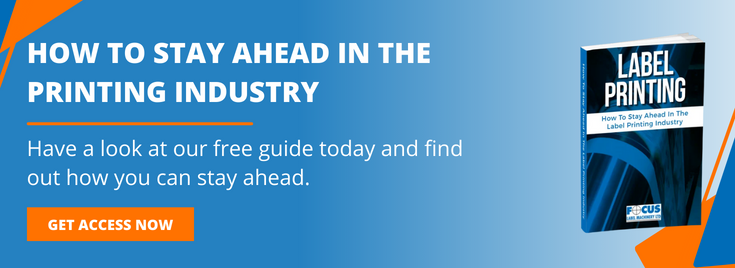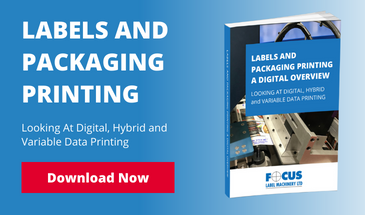
The label printing industry has changed a lot in the last decade, and today printing companies that don't adopt digital printing are putting their ability to compete at risk. Here are some of the factors behind the rise of digital printing technology:
Competitiveness On Shorter Print Runs
Flexographic equipment are still extremely economical for medium to high volume print runs. However, there are a lot of potential customers out there that simply don't need half a million labels printed at one time. It is not uncommon for an order to be 500 labels or less. In order for flexographic printing to be competitive, the customer will generally need to pay for a big run and call off smaller quantities as required. With small print runs in increasing demand, printers with the flexibility to offer low prices on small volumes are in a stronger position to secure a good share of the market.
Why are small print runs a popular choice in many industries? To give an example, many companies that work in the food and cosmetic industry need to be able to adapt their labelling to the changing regulatory environment, so paying for a huge run of labels from a conventional press can be a major headache if the laws change. In many cases companies prefer to pay a little bit more per unit, and have the flexibility to print the kinds of label they want, when they need them.
Faster Set-up Times
Unless you have recently invested in new generation Flexo equipment with servo technology the set-up time for an older traditional flexo press is a big drawback when compared to digital or hybrid equipment. Instead of spending time making plates and aligning them, digital Ink jet can take minutes to set up, and move to production with some models offering ‘click & print’ operation. You can change over many more jobs per shift, and accommodate last minute orders. It is true that for very large printing runs flexo presses are still faster than digital, but the quantity of labels needed to justify the economical use of a press is relatively high in comparison.
Versatile Capability
A digital label printing machine gives you the ability to print multiple versions of a label within the same print run – giving your customers increased choice.
Graphic designers frequently like to make slight label variations within a product line. Accommodating this is not cost-effective with a flexo press, unless the customer requires large volumes of each variant.
Otherwise, each variant would require its own set of printing plates and a lengthy changeover time between runs. With digital, not only is this level of flexibility possible, it is fast and easy. A multi-design digital print run can be programmed in advance and triggered at the touch of a button, with minimal physical set up requirements. This level of automation makes digital printing extremely cost effective for small volumes, even if the upfront investment for digital technology is often higher than for flexo presses. Using & combining digital presses on your production line allows you greater flexibility with your shift pattern, perhaps allowing you to produce the same amount of work in fewer shifts, or increasing your order capacity.
Let Focus Labels Help
Here at Focus Label, we make both flexographic presses and digital equipment, as well as an advanced range of hybrid presses. A hybrid press is a printer that incorporates digital inkjet technology along with some elements of a flexo press in order to increase its cost-effectiveness for higher print volumes. While digital and flexo work well on their own for some label printing businesses, we feel that any successful printing operation will need to have both on-site to compete going forward.
For more insights about the trends we see developing in the market, please have a look at How To Stay Ahead In The Label Printing Industry’ our new, free e-book If you have any questions about what we can do for you, give us a call on 01949 836 223 for a chat.







